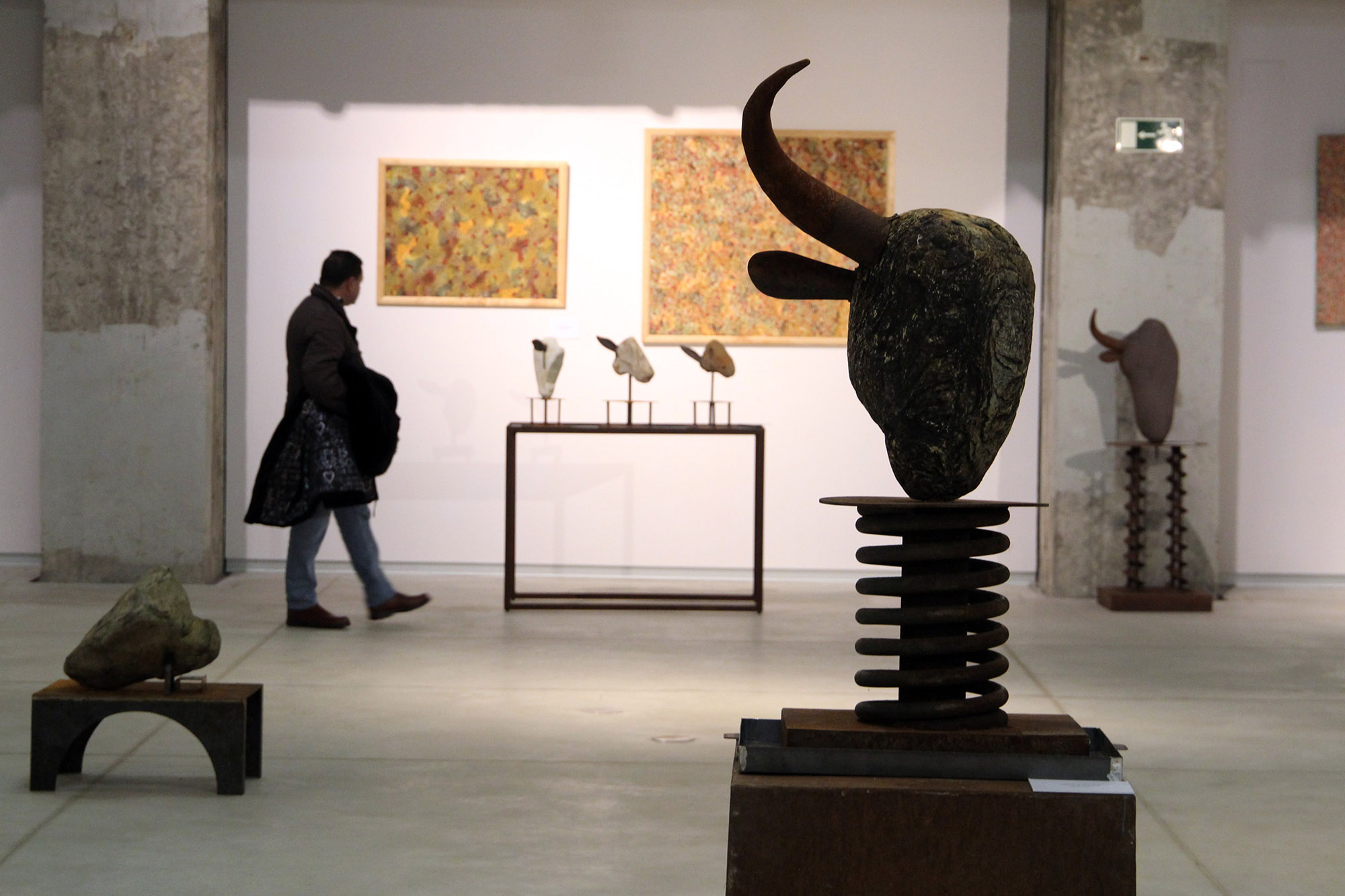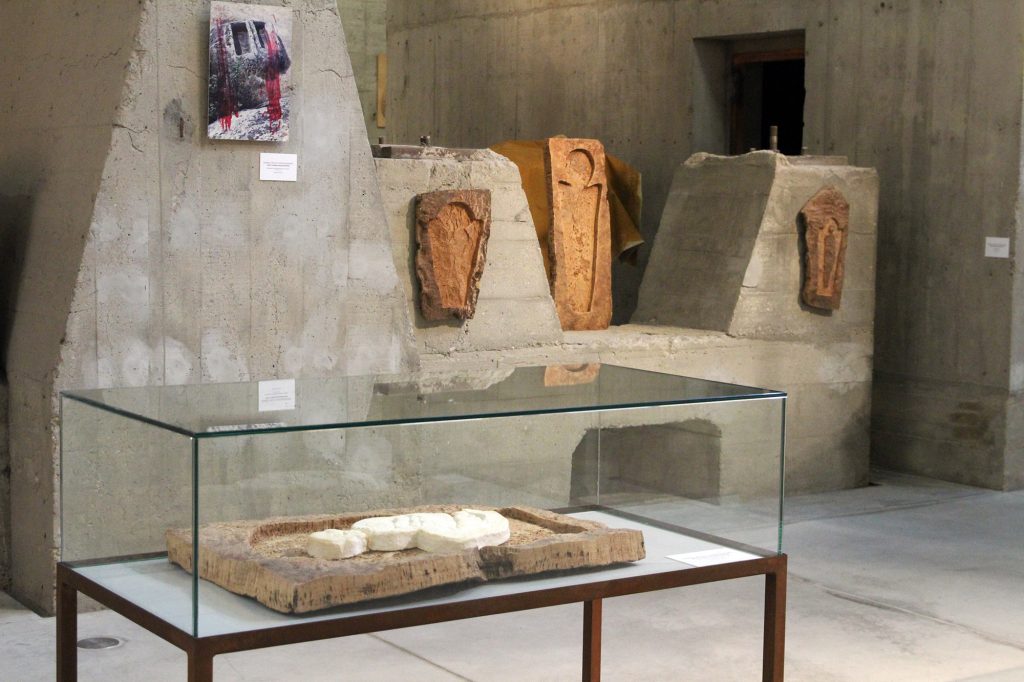Horario: jueves de 10 a 16h, viernes y sábado de 10 a 22 h y domingo de 10 a 16h.
Visiones de Francisco Chamorro, Irene Grau, José Santocildes, María Jesús Manzanares y Lolo Zapico
Con el descubrimiento de las pinturas rupestres de Altamira en 1879, el arte parietal paleolítico se convirtió paulatinamente en una fuente de gran interés a nivel académico y artístico. De forma sucesiva se fueron dando nuevos descubrimientos que inundaron el panorama artístico con nuevas manifestaciones y formas de representación: la Cueva de Lascaux, la Cueva de El Castillo, la Cueva des Combarelles, la Cueva de Chauvet…
Bisontes, tonos tierra, caballos, ocres, ciervos, cazadores, terracotas… fueron los principales motivos que el ser humano decidió representar al abrigo de sus hogares. Ya fuera como instrucción para la caza, como meras decoraciones o por devoción. Para realizar estas pinturas emplearon los pigmentos más elementales: óxidos de hierro para rojizos y ocres; carbón vegetal o animal para negros. En cuanto a técnicas, existen tantas como representaciones mismas, ya fuera por adición como el enlucido, el soplado, la tinta plana o por sustracción, como el grabado y el relieve. Además de ser especialmente revelador el juego con las ondulaciones propias de la superficie, como sucede en Altamira, aportando textura y apoyo a la propia representación artística. En definitiva, los colores, el dibujo y el naturalismo son los aspectos formales que definen el arte rupestre.
Según su estudio avanzaba y se profundizaba, se conocían más exponentes y se trasladaba al mundo los nuevos descubrimientos. Estas representaciones comenzaron a ser cubiertas de un halo de pureza, un sentimiento de esencialidad y elementalidad. Muchos artistas del siglo XX consideraron estas manifestaciones como el Primer Arte, el origen. Mientras los ismos de las vanguardias se iban formando, huyendo del academicismo y del mimetismo, estas tendencias encontraron en el arte prehistórico una fuente de inspiración, puesto que pretendían escapar de todo lo conocido a través de su arte. Y para eso precisamente encontraron en el arte rupestre todo lo que anhelaban: la novedad y al mismo tiempo la elementalidad. Las técnicas empleadas en las cuevas y abrigos se revelaron como extraordinariamente modernas, congregando en ellas la dicotomía que definió al arte del siglo XX: figuración y abstracción.
El arte contemporáneo permite plasmar una nueva visión de la naturaleza y la realidad en la que el ser humano se encuentra, partiendo de los conceptos de esencialidad y primitivismo del que el arte rupestre se ha visto envuelto.
Esta muestra invita al visitante a conocer los orígenes del interés por el arte parietal paleolítico y adentrarse en los entresijos de la obra de Francisco Chamorro, Irene Grau, José Santocildes, María Jesús Manzanares y Lolo Zapico que, por medio de técnicas muy variadas y diversas entre sí, exploran la relación entre el arte y la naturaleza, el arte y la prehistoria…
Organizan
Fundación Ciudad de la Energía (CIUDEN), La Térmica Cultural y Museo Nacional de Altamira
Colaboran
Fundació Mas Miró, Frobenius Institute, MoMA, Scala Archives, Museo Arqueológico y Paleontológico de la Comunidad de Madrid y Future Proof Furniture



























